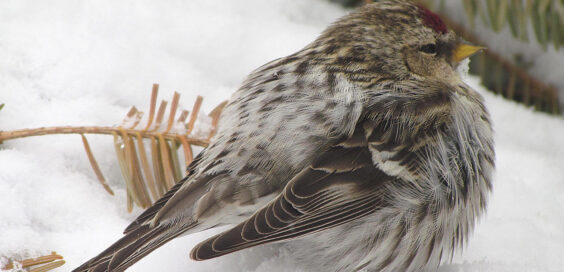
Creature Feature – Nomads from the North
Posted by Dustin Horton // January 9, 2024 // Articles, Creature Feature
Avid birdwatchers know that an irruption is the sudden large-scale change in movement of northern-wintering birds to the south in response to low food availability. Typical irruptive species include finches such as Common Redpolls, Pine Siskins, and Evening Grosbeaks, as well as other birds like Bohemian Waxwings, Red-breasted Nuthatches, Snowy Owls, and more.
Many of these birds spend the breeding season in the northern boreal forests stretching from Russia and Alaska to Newfoundland and Labrador, but in years with poor seed crops – or when a boom in rodents causes a subsequent population increase in owls – the birds find themselves competing for less food. In response, they drift further south than they normally would, resulting in irruption years. Such times offer us the chance to see birds not typical to our region.
This year, the food sources that support northern finch varieties are spotty; in particular, the White Spruce and Tamarack trees produced a scant cone crop. Also, the numerous, rampant wildfires caused localized damage. Due to food shortages, biologists predict a moderate irruption for some avian species this winter including Common Redpolls. These small brown and white finches are best identified by a small red cap and two white wingbars (see photo).
Offering black oil sunflower seed, nyjer seed, or other finch seed mixes along with fresh water can attract Redpolls to your feeder this winter, as well as other northern nomads like Evening Grosbeaks, Pine Siskins, and Purple Finches.
Article & photo by Margie Manthey













